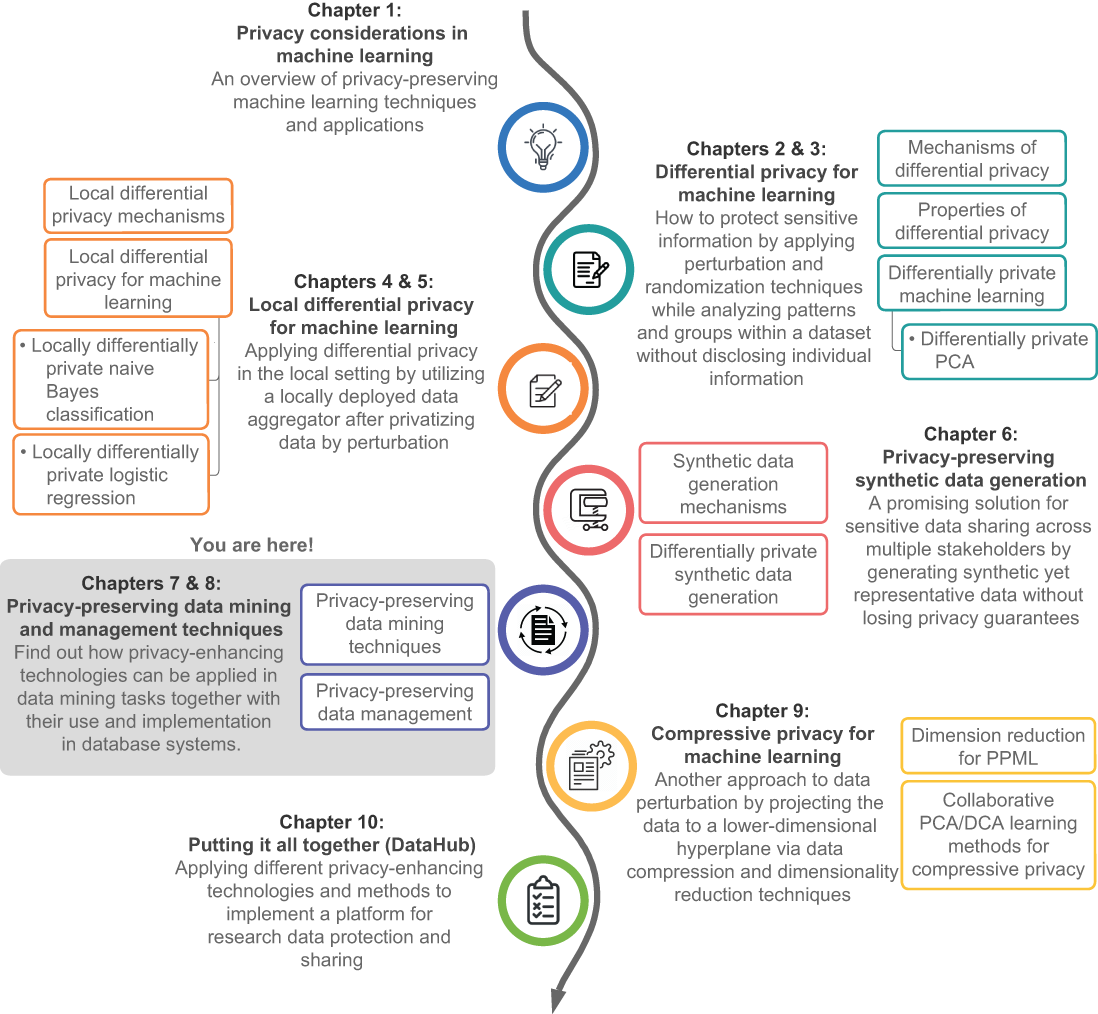So far we have discussed different privacy-enhancing technologies that the research community and the industry have partnered together on. This chapter focuses on how these privacy techniques can be utilized for data mining and management operations. In essence, data mining is the process of discovering new relationships and patterns in data to achieve further meaningful analysis. This usually involves machine learning, statistical operations, and data management systems. In this chapter we will explore how various privacy-enhancing technologies can be bundled with data mining operations to achieve privacy-preserving data mining.
First, we will look at the importance of privacy preservation in data mining and how private information can be disclosed to the outside world. Then we will walk through the different approaches that can be utilized to ensure privacy guarantees in data mining operations, along with some examples. Toward the end of this chapter, we will discuss the recent evolution of data management techniques and how these privacy mechanisms can be instrumented in database systems to design a tailor-made privacy-enriched database management system.
